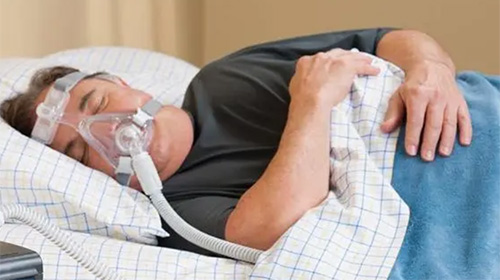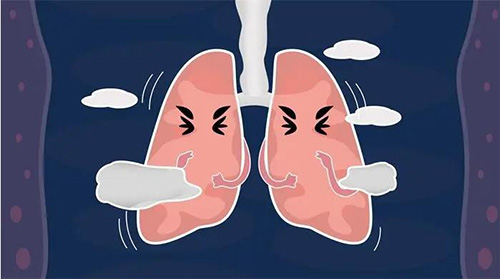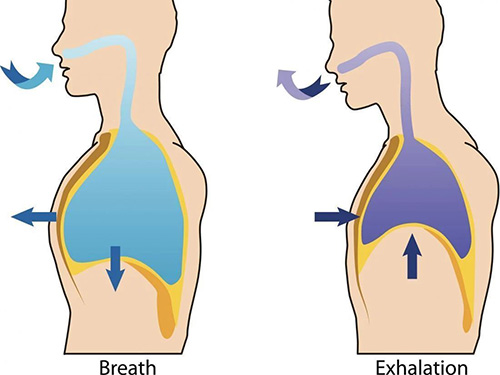15 Apr 2022
As the disease of chronic obstructive pulmonary disease (COPD) deepens, many patients will have hypoxemia. Hypoxemia is a major cause of pulmonary hypertension and pulmonary heart disease, as well as an important cause of metabolic disorders and important organ dysfunction in the body. Long-term use of home oxygen therapy devices such as oxygen concentrators and oxygen cylinders is an important means to improve hypoxic symptoms and control the progression of COPD patients. COPD patients should not be blindly treated with oxygen inhalation at home. High concentrations of oxygen inhalation are harmful, and appropriate oxygen concentrator devices should be correctly selected.

Benefits of long-term oxygen therapy for COPD
1. Household oxygen therapy with the oxygen concentrator can correct hypoxemia, alleviate the deterioration of lung function, and help patients improve symptoms such as hypoxia and dyspnea. The medical oxygen concentrator can cooperate with the treatment of cardiovascular and cerebrovascular diseases, respiratory system, chronic obstructive pneumonia and other diseases by supplying oxygen to patients.
2. It helps patients improve sleep quality, increase exercise endurance, improve quality of life, and reduce physical and mental burden. Nocturnal oxygen therapy (NOT) with the oxygen concentrator is recommended for patients with obstructive sleep apnea syndrome, obesity hypopnea syndrome and respiratory failure. It is recommended that patients with chronic lung disease use Ambulatory Oxygen Therapy (AOT) with the oxygen concentrator during outdoor activities, or use a small portable oxygen concentrator.
3. It can prevent or delay the occurrence and development of pulmonary heart disease, and is helpful to improve survival rate and prolong survival period. Home oxygen therapy with the oxygen concentrator can reduce the number of hospitalizations and prevent disease aggravation. Therefore, the therapeutic effect of oxygen therapy with the oxygen concentrator cannot be replaced by any drug treatment.
4. Long-term oxygen therapy with the oxygen concentrator can also reduce the incidence of erythrocytosis, delay the occurrence of pulmonary hypertension and improve the patient's mental state.

Which patients need long-term oxygen therapy ?
In general, long-term oxygen therapy with the oxygen concentrator is recommended when copd patients have advanced to a more severe stage of the disease or when the patient does exhibit hypoxia. According to the 2013 Guidelines for diagnosis and Treatment of Chronic obstructive Pulmonary Disease, the specific indications for chronic obstructive pulmonary disease patients undergoing long-term home oxygen therapy with the oxygen concentrator include:
1. Arterial blood oxygen partial pressure ≤55mm Hg or peripheral blood oxygen saturation ≤88%, with or without hypercapnia;
2. Arterial blood oxygen partial pressure 55-60mm Hg or peripheral blood oxygen saturation < 89%, and pulmonary hypertension, heart failure edema or polycythemia.

What specific requirement does long-term oxygen therapy have ?
1. Course of treatment: Home oxygen therapy with the oxygen concentrator should be long-term, patients need to adhere to oxygen inhalation for at least 6 months, in order to obtain better oxygen therapy effect.
2. Time: It is better to take oxygen for more than 15 hours a day. As early as the last century in the 1970s, a large study confirmed that long-term uninterrupted oxygen inhalation effect > pure night oxygen inhalation > no oxygen inhalation at all. For the average person, 24 hours of oxygen a day is difficult to achieve, but the study found that 15 hours of oxygen a day clearly improved survival, so 15 hours became the guideline. The specific length of time still depends on the patient's condition, as long as conditions allow, the better.
3. Oxygen supply method: Long-term home oxygen therapy generally uses the oxygen concentrator or an oxygen bottle. Pay attention to keeping the nasal cannula unobstructed during oxygen inhalation. After oxygen inhalation every day, pay attention to cleaning the nasal cannula and humidification bottle in time, and at the same time add half of the cold water to the humidification bottle.
4. Oxygen flow: Generally speaking, the oxygen flow rate of COPD patients is below 2 liters/minute. There is a scale on the oxygen concentrator flow meter, and the flow rate can be adjusted to 1~2 liters/minute, that is, low flow oxygen.

Risk of high concentration oxygen inhalation in patients with chronic obstructive pulmonary disease
Over the past decade, it has been gradually recognized that hypercapnia can be caused by excessive oxygen therapy with the oxygen concentrator, especially high FiO2 (oxygen concentration fraction in inhaled air), in patients with acute exacerbations of severe COPD. The mechanism may be related to the combined effects of the following factors:
1. Imbalance of V/Q (lung ventilation/perfusion) ratio. High FiO2 reduces the vasoconstriction originally caused by hypoxia after oxygen inhalation, resulting in the imbalance of V/Q ratio.
2. Haldane effect. Experimental results show that the location of CO2 dissociation curve is affected by SaO2 (arterial oxygen saturation). When SaO2 drops on one side of the tissue, the CO2 dissociation curve moves up, which is conducive to the blood loading more CO2. The more oxygen blood releases to the tissue, the lower the SaO2 drops, the higher the CO2 dissociation curve moves up, and the more CO2 blood removes from the tissue. On the contrary, on one side of the alveoli, when SaO2 increases, the CO2 dissociation curve moves downward, which is conducive to the removal of CO2 carried by blood. At this point, the more oxygen bound, the more CO2 removed. This rule of SaO2 affecting blood CO2 content is called Haldane effect. The Haldane effect works by encouraging the blood to load more CO2 on one side of the tissue and remove more CO2 on the alveolar side.

3. Suppression of the respiratory center resulting in hypoventilation: Non-empirical evidence suggests that the upper limit of SpO2 (blood oxygen saturation) after oxygen inhalation should not be greater than 95%, as high levels of oxygen inhalation may increase the risk of hypercapnia and acidosis, longer hospital stays, higher rates of non-invasive ventilation, and greater likelihood of ventilator dependence. Target oxygen therapy (SpO2 in 88%-92%) had less chance of respiratory acidosis and better prognosis.
If the lung receives high FiO2, especially if the local V/Q ratio is elevated, the oxidative stress response will be enhanced. After oxygen inhalation, metabolites of reactive oxygen species produced in mitochondria can produce many adverse reactions to lung, including decreased antiprotease activity, increased mucus secretion, cilia movement damage, decreased activity of surfactant, increased permeability of epithelial cells, increased chemotaxis and adhesion of leukocytes, etc. Foschino and Barbaro found biological evidence of increased oxidative stress in patients with stable COPD after oxygen inhalation (2L/min) for 18h. Other studies have shown elevated levels of isoprostane and interleukin-6 in exhaled air after short-term inhalation of 28% oxygen in COPD patients.

In acute exacerbation of COPD, patients with high FiO2 have a significantly increased risk of hypercapnia and even type ii respiratory failure due to inhibition of respiratory center. Hypercapnia and respiratory failure associated with hyper oxygen therapy increase the need for mechanical ventilation and the risk of death. PaCO2 (arterial partial pressure of carbon dioxide) was an independent predictor of death. Several studies have shown that increased mortality in COPD patients is associated with hyperxemia. There was a dose-dependent correlation between abnormal increase of PaCO2 and inpatient mortality. The main mechanism of this injury is oxidative damage in the respiratory system and multiple systemic systems. Results of randomized controlled pre-hospital studies in patients with acute exacerbations of COPD showed a 2-to-4-fold increase in mortality with high FiO2 compared with titrated oxygen therapy (SaO2 88%-92%), so the target SpO2 for these patients was 88%-92%.
Of course, there are a few reports with opposite results, but the author suggested in the discussion that the negative results of this study may be due to the retrospective analysis of this study, which is difficult to avoid some confounding factors, as well as the small sample size and short observation time.
Keywords: oxygen concentrator
Originally published 15 Apr 2022, updated 15 Apr 2022.